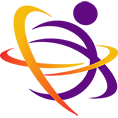Abstract:
Purpose
This study aimed to describe the national prevalence of Chinese children and adolescents who met the World Health Organization muscle-strengthening exercise (MSE) recommendations and identify correlates of meeting the MSE recommendations.
Methods
Cross-sectional data from the 2019 Physical Activity and Fitness in China—The Youth Study, a nationally representative sample of Chinese children and adolescents (n = 80,413; mean age = 13.7 years; 53.9% girls) and their parents, were analyzed. Children and adolescents who reported engaging ≥3 days (up to 7 days) of MSE per week were classified as meeting the MSE recommendations. MSE, demographics, lifestyle behaviors (sport participation, moderate-to-vigorous physical activity, screen time, and sleep duration), exercise intention, peer and parental support, and parental MSE participation were assessed through self-reports. Logistic regression models were used to determine the correlates of meeting the MSE recommendations. The analyses were completed in 2020.
Results
Overall, 39.3% of children and adolescents met the MSE recommendations. Girls, 10th–12th graders, minorities, those from lower income households and those from families with lower parental education were less likely to meet the MSE recommendations. Children and adolescents who were proficient in ≥2 sports were more likely to meet the MSE recommendations (adjusted odds ratio (aOR) = 1.44, 95% confidence interval (95%CI): 1.26–1.65), as were those with more moderate-to-vigorous physical activity (aOR = 1.57, 95%CI: 1.53–1.61). Additionally, children and adolescents with high exercise intention (aOR = 1.60, 95%CI: 1.51–1.69), those whose parents met the adult MSE recommendations (aOR = 1.46, 95%CI: 1.40–1.52), and those who received high peer (aOR = 1.27, 95%CI: 1.20–1.34) and parental support (aOR = 1.07, 95%CI: 1.04–1.12) were more likely to meet the MSE recommendations.
Conclusion
Less than two-fifths of Chinese children and adolescents met the World Health Organization MSE recommendations. The correlates identified in our study can help inform the development of school and community based strategies and policies to enhance participation in MSE and improve muscular fitness of all Chinese children and adolescents.
If you want to find the full article, please click the link below:
